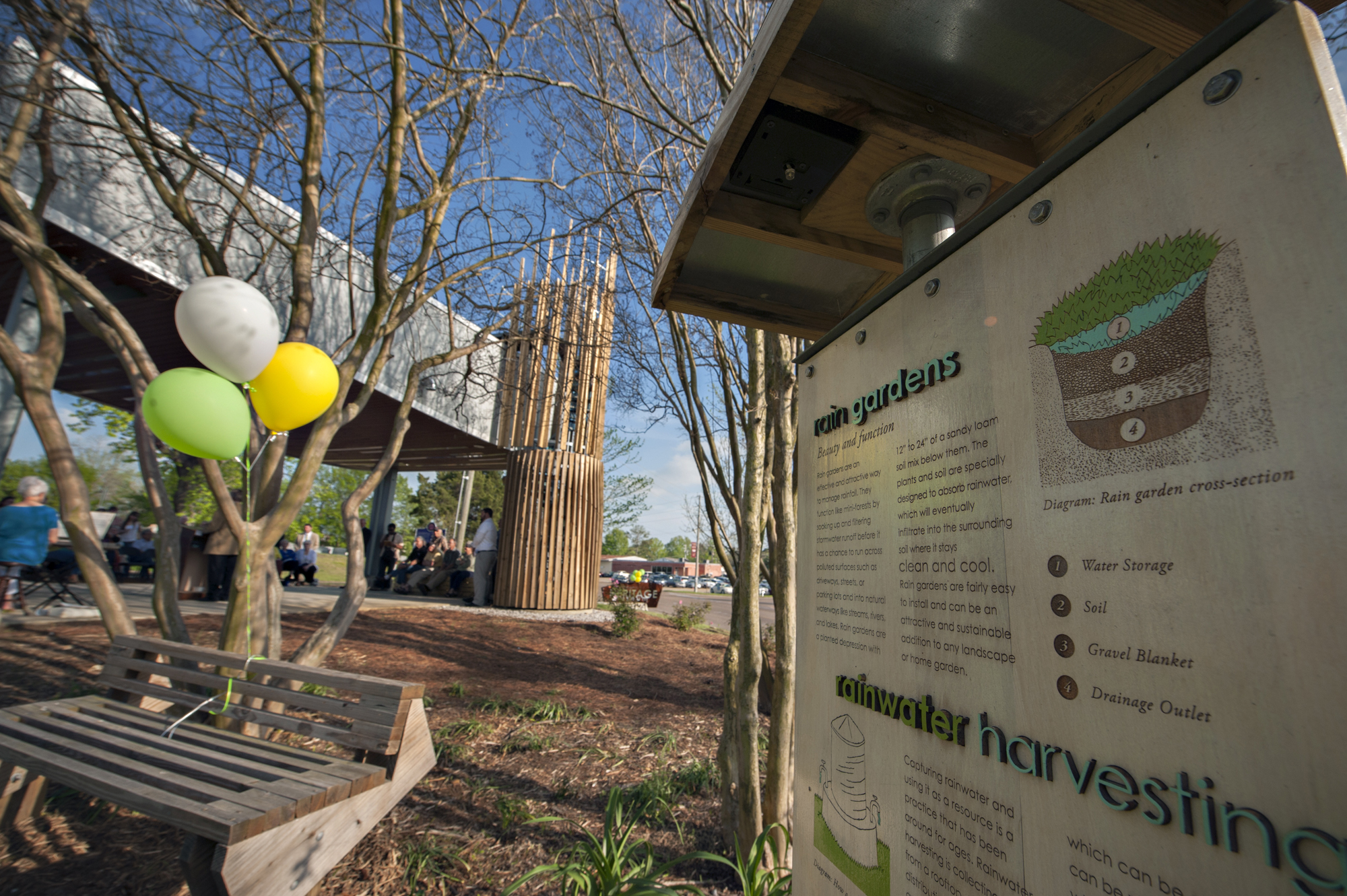Contact: Leah Barbour

Photo by: Megan Bean
More than 100 students representing six Mississippi State University disciplines were recognized Tuesday [Oct. 1] with the American Society of Landscape Architecture's Award of Excellence in Student Collaboration.
Awards of Excellence are the highest honor bestowed by the ASLA, the national professional association for landscape architects, said faculty advisor Cory Gallo, assistant professor of landscape architecture at MSU. This recognition will improve the landscape architecture program's visibility on a national scale, especially for students interested in working on real-world projects prior to graduation, he explained.
"We'll be listed on the front page of the ASLA Student Awards website for the entire year," Gallo said. "This is a first for the department and a first for Starkville."
The students received the award for their work at Oktibbeha County Heritage Museum, which is now the regional demonstration site for green infrastructure and sustainable building technologies. Thanks to their years of hard work, MSU students created the most diverse collection of green infrastructure technologies, Gallo said.
Features at the museum include a 700 square-foot rain garden, a 200 square-foot sand filter and more than 1,000 square-feet of new plantings. Additionally, the students used recycled or repurposed materials to create a 1,000-gallon rainwater cistern, a 600 square-foot green roof pavilion and a circular stair to access it. Even the new American Disabilities Act-compliant entrance is made of recycled, composite deck board.
In 2009, MSU landscape architecture students began addressing stormwater runoff at the museum, but that was just the beginning. Over the next five years, landscape contracting, architecture, art, building construction science and graphic design students joined the effort, themed "Celebrating the Past While Embracing the Future."
Undergraduate landscape architecture students participated in each of the five phases of work. In phase one, they designed and implemented the rain garden to mitigate the stormwater runoff from the roof and parking lot. They also introduced numerous new plants on the grounds.
Graduate landscape architecture students, along with landscape contracting students, joined with them in phase two and three. They developed the sand filter to collect, clean and absorb roof runoff, created an outdoor amphitheater around the filter, and redesigned and built a new entrance.
Graphic design students got involved during phase four: They designed kiosks using the information developed by landscape architecture students in a watershed management seminar course.
Phase five incorporated students from architecture, art and building construction science with landscape architecture, as the team of students designed and built the pavilion, a formal lawn and a new walkway.
"We are at the cutting edge of the trend that gives the students an experience they cannot get in the classroom," said Brian Templeton, extension associate for landscape architecture. "It's about education and giving the students experiences that they couldn't have in a lecture or in a studio.
"This experience is also about community service: Students have a sense of pride about their work when they're doing something for someone else."
Many students worked on the project even after the classroom work was complete, Gallo said. Additionally, the community's support of the project was critical, including the Starkville Board of Aldermen, the Oktibbeha County Board of Supervisors and the city road crew, among others.
"There's a long list of people to thank," he continued. "Bill Poe, the museum liaison, was a real Bulldog in getting this project off the ground. MSU's Wayne Wilkerson (director of MSU's Mississippi Water Resources Research Institution) was really involved with faculty in the first phase and the second. Lynn Spruill gave a major donation."
A full list of contributors, including individuals and organizations, appears on the ASLA's website, http://www.asla.org. Go to ASLA Student Awards and click on Oktibbeha County Heritage Museum to view the 32 parties which provided the vital services leading to the completion of the award-winning project.
The museum project's success has led to a service-learning course to be held each spring semester. While the 2014 project has not yet been decided, it will also be a real-world project in which students will address design challenges and benefit the community.
Learn more about MSU's landscape architecture programs at http://www.lalc.msstate.edu.